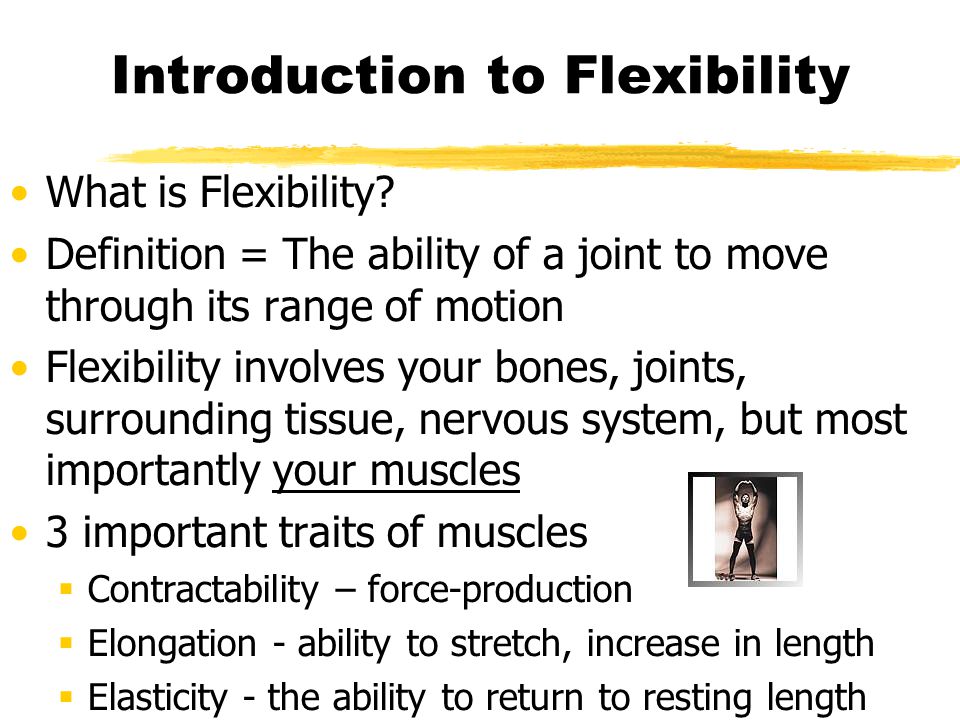
Many yoga poses put strain on the shoulders and can result in injury. It is crucial to know the anatomy and function of the shoulder joint before you start a new yoga practice. The shoulder joint is made up of three bones: the scapula, clavicle and humerus. Each bone has its own unique range of motion, and they all meet at an elbow joint.
The quads are the muscles that are responsible for knee extension. The gluteus maximus and the front and back thigh muscle are joined by the gluteus maximus. These muscles are responsible for hip flexion, abduction, and hip flexion. While these are not the only four muscles that contribute to yoga poses, they are integral to each pose. It is easy to see why each of these muscles is important. You'll begin to feel the importance of each as you work through different yoga poses.
Hamstrings are responsible to knee extension and are derived form the ischial tuberosity of the pelvic bowl. They also play a part in hip extension. These muscles are vital to many of the yoga poses. However they can be difficult for some to access if they are not properly aligned. Although it is more difficult to align your arms with your chest, this will allow you to be more flexible and improve your balance. Once you understand the anatomy and function of your hamstrings, you can move onto the next one.

The hamstrings are another area that can be benefited from yoga. The hamstrings control knee extension and are located in the pelvic bowl's ischial tuberosity. They aid in hip flexion and plantarflexion. The hamstrings are important for many yoga poses because they are responsible for many different movements in the body. This allows you to choose the one that suits your needs.
Do not overstretch the SI joint while doing the balancing poses. The goal should be to maintain a steady, balanced range of motion with a strong core. Also, consider how the pose is aligned. The knee will hurt if a joint is stretched too far. This can cause injury. You can use props to help you align more properly.
Overmobilized scapulae: While this may give the appearance of a twist, it does not necessarily occur in this pose. The spin of the spine can also depend on the position and arm position. When it is in a fully flexed position, the meniscus moves to the back of the joint. A well-aligned pelvis helps the body's muscles to work in the correct direction. Your spine and hips should be equally distributed.
To ensure a consistent range of motion in the knee joints, the pelvic must be flexed. The pelvis, scapula and sacrum should be in a neutral position. If they are not, the pose can cause spinal flexion and may cause injury. It is best to avoid this position if this happens. While the leg extends fully, the meniscus must be pushed to one side of the joint.

Three bones make up the pelvis: femur (left) and thighbone (right). They are rounded and form a cup-shaped structure. The head is found in the pelvis. It is a round bone located at the top end of the thigh. The femur is also where the lower leg bones meet. Each of these three bones has a slightly different shape and angle. This can affect the ease and strength of some yoga poses.
Beginners should be familiar with the anatomy and movements of the yoga poses. As you become more familiar with your body, it will be easier to do the postures correctly. David Katz, a world-renowned specialist in yoga and anatomy, gives a detailed explanation of the anatomy basics in his book Anatomical Position. He describes the anatomy of key yoga poses, and the effects they have on the body. The anatomy can be applied to everyday life once you are familiar with it.
FAQ
Do I need to exercise every day?
No! Do at least 30 minutes of moderate intensity physical activity five days a week. This could be walking fast enough so you feel slightly out breath or cycling hard enough to sweat.
Which is the best order to exercise?
It all depends what you want. If you want to build muscle mass, then do heavy weights first. Then move into cardio. For those who want to lose weight or exercise, you can switch from cardio to strength-training.
If you just want to burn fat, start by doing cardio. You can then add strength training.
Then if you want to gain muscle mass, do cardio last because it stimulates growth hormones which help build muscle mass.
It is important to eat before going to work out. This will fuel your muscles and make them work harder. Plus, it makes you feel better during your workout.
What is a good seven-day workout routine?
A seven-day exercise plan should include cardiovascular training (running/biking/swimming), strength exercises (using weight machines, free weights) and one flexibility/core program (yoga or Pilates). It's essential to do each activity at least once a week. The total time for each session should not exceed 45 minutes.
Cardiovascular Exercise: Running, Biking, Swimming
You should aim to get at least 60 mins of cardio exercise per week. Try to do 75 minutes per semaine for the best results. Cardio exercise can improve blood flow and stimulate muscle development.
Strength Training
Cardio exercises focus on the heart and lungs while strength training targets muscles and bones. Strength training builds lean muscle mass, which helps burn calories even when resting.
Flexibility & Core Workouts
Your whole body will be stronger if you have flexibility and core training. Both yoga as well as Pilates are great choices.
Can I go to the gym seven days a week?
You can go to your gym seven days a semaine, but not simultaneously. You have to find a time where you can do this without feeling too exhausted and drained.
This will keep you motivated and provide energy for other activities.
Also, ensure you eat healthy during these times. This will ensure that you aren't tired and slow when you go to the gym.
Last but not least, ensure there are no other people competing for your time. You might want to avoid working out on school nights if you have kids. They can distract you from your exercise routine.
Statistics
- Are You One of the 20% of Guys (mh.co.za)
- 10 pounds in a month is likely during a lean bulking phase, especially for beginners. (muscleandstrength.com)
- According to the American Heart Association, blood pressure should be checked at least once every two years, beginning at age 20. (my.clevelandclinic.org)
- Candidates and applicants must pass all four tests at 70% (minimum level) to graduate from Basic Deputy U.S. Marshal (BDUSM) Training. (usmarshals.gov)
- Cardmembers earn 5% Back at Amazon.com with a Prime Credit Card. (amazon.com)
External Links
How To
What nutrients do men need each day?
Healthy growth and development of men requires healthy nutrition. The body needs vitamins, minerals as well as proteins, carbohydrates and fats.
Males also require specific nutrients at certain times of the day. Your body makes hormones, antibodies and enzymes when you are asleep. When you awake, protein is used by your body to build muscles or repair damaged tissue.
Your body will burn fat at night and store the extra energy as a form of glycogen. Your body has less energy but still requires enough nutrients during this time. You might have an occasional snack during the night if your stomach is feeling hungry.
You need to eat enough carbs and protein when you exercise. You may feel sore muscles if you exercise hard.
You must ingest carbs and protein within two hours of training to prevent this. Your body will break down stored glycogen to provide glucose for energy.
Also, protein must be consumed immediately after your workouts. This prevents muscle tissue loss that happens while you sleep.
Your body makes lactic acid when you are doing intense physical activities. Lactic acid builds up in the bloodstream and causes fatigue. Eat foods high in carbohydrate, such as fruits, vegetables, to avoid this.
Carbohydrates provide energy for your body to recover after strenuous exercise.
You may also want to include lean meats and fish, as well as yogurt, cheese, yogurt, beans and nuts in your diet.
All these foods are high-quality sources of protein. Protein is important for muscle growth and repair. Protein also supplies the amino acids your body requires to make sex hormones, such as testosterone.
Good skin, hair, and joint health requires adequate dietary fats. Healthy men should consume between 20% to 35% of their daily caloric intake from fat.
Fat helps protect your heart health and prevents cancer. It helps keep your brain working properly.
You can get most of the fat you need from vegetable oils like olive oil, sunflower oil, corn oil, soybean oil, peanut oil, and safflower oil.
These oils are high in monounsaturated fatty acids (MUFAs). MUFAs help lower cholesterol and reduce inflammation. They protect cells against damage from free radicals.
Saturated Fats (SFAs), which are mostly found in animal products like meat, butter, and dairy products, include LDL ("bad") cholesterol. SFAs increase LDL ("bad") cholesterol, and increase triglycerides. They also promote weight gain and belly fat.
Polyunsaturated fats (PUFAs) are found in plant-based sources like vegetable oils, nuts, seeds, and grains. PUFAs improve cardiovascular function and decrease inflammation. They are also good for controlling blood sugar and cholesterol.
Erectile dysfunction can often be a problem for men who have low HDL ("good") levels of cholesterol. The consumption of saturated fats raises bad cholesterol which in turn lowers good cholesterol.
Men who eat large quantities of red meats or pork may develop prostate problems. Nitrites convert to nitrosamines when cooked at high temperatures. These compounds can cause cancer.
Most processed meats contain nitrites and other harmful chemicals. Avoid them.
The American Heart Association recommends limiting red meat intake to two meals per week. Choose poultry, fish and legumes instead.